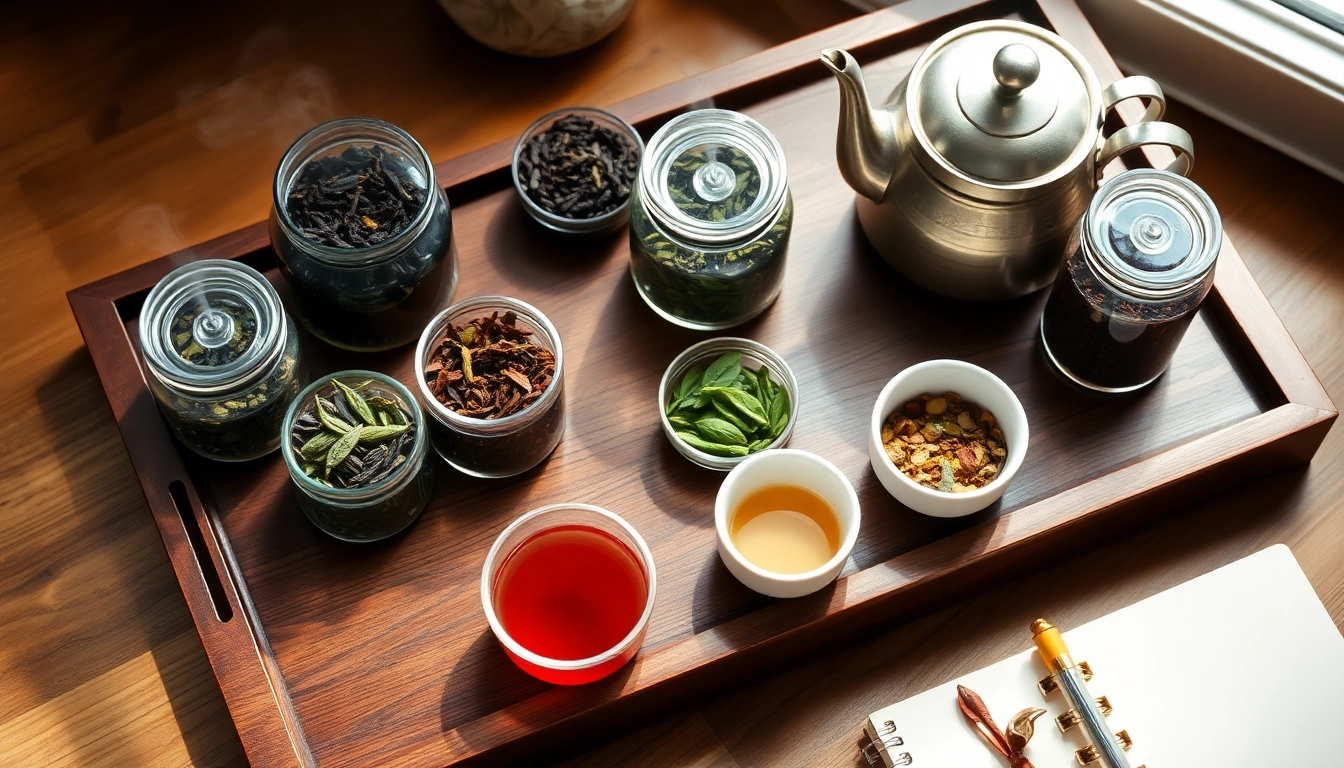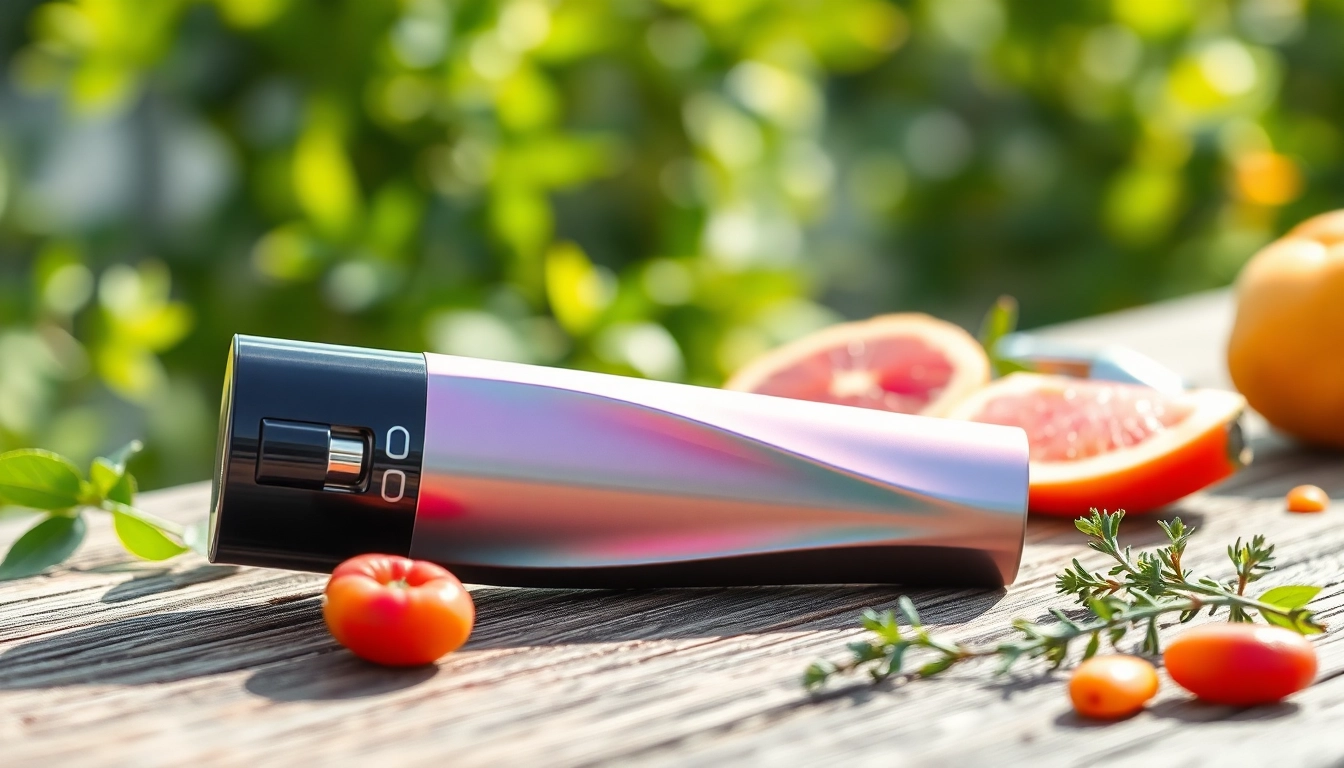Understanding Single Origin Tea
Single origin tea has surged in popularity among tea enthusiasts and casual drinkers alike, creating a niche that celebrates the unique flavors and characteristics sourced from specific regions. Unlike blended teas, which merge leaves from various sources, single origin tea offers a distinctive tasting experience that is deeply rooted in its geography. This article delves into the essence of single origin tea, its historical significance, the regions that produce it, and its health benefits.
What is Single Origin Tea?
Single origin tea refers to tea that is sourced from one specific region or estate, ensuring that it reflects the unique terroir of that area. Each tea type—be it black, green, white, or herbal—carries distinct characteristics that are influenced by factors such as soil quality, altitude, climate, and cultivation methods. By keeping the leaves sourced from a single place, consumers can enjoy the unadulterated taste profile that reflects the nuances of its origin.
History and Cultural Significance of Single Origin Tea
The tradition of single origin tea can be traced back centuries, particularly in cultures where tea has been a significant part of social rituals and daily life. In countries like China, Japan, and India, tea has served not only as a beverage but also as a symbol of hospitality, cultural practices, and artistic expression. For example, Chinese tea ceremonies are deeply intertwined with historical customs, where the quality of the tea, often sourced from specific regions like Yunnan or Fujian, plays a crucial role in the experience.
In India, the Darjeeling or Assam regions are revered for their rich biodiversity and ideal climates, producing teas that are celebrated worldwide. This historical significance is intertwined with the reputation of the regions, elevating their teas to status symbols that provide insight into local traditions and practices. The appreciation of single origin gives consumers access not only to flavors but also to stories that enhance their tea-drinking experience.
How Single Origin Differs from Blended Tea
While single origin tea focuses on the specific flavor profile associated with a particular region, blended tea combines leaves from different sources to create a consistent taste or to capitalize on flavor synergies. For companies, blending can ensure a product that remains uniform in flavor year-round. However, this may lead to a loss of the unique characteristics that define each tea.
In contrast, single origin tea allows for the exploration of a specific tea’s offerings by presenting its inherent qualities. This emphasis on purity not only appeals to purists but also allows tea drinkers to discover varied flavors derived from unique cultivations. For example, a well-sourced Darjeeling black tea will exhibit a muscatel flavor, while a blended version may smooth out these distinctive notes in favor of a more homogenized taste.
Top Regions for Single Origin Tea
Notable Regions for Black Single Origin Tea
When discussing single origin black teas, two names frequently arise: Assam and Darjeeling. Assumed to be one of the world’s largest tea-growing regions, Assam is known for its bold, malty flavors that are a delight in any cup. The teas here thrive in a tropical climate, producing robust profiles favored in breakfast blends worldwide.
Darjeeling, in contrast, is often referred to as the “Champagne of Teas.” Grown in the foothills of the Himalayas, Darjeeling black teas are celebrated for their delicate muscatel flavors and floral aromas. These exquisite teas go through intricate seasonal picking processes, with careful processing that leads to their distinct characteristics. Tea drinkers may experience first flush teas with brighter, more vibrant notes or second flush varieties that are rich with fruity depth.
Famous Green Single Origin Teas from Around the World
Green teas are another category where single origin shines remarkably. Perhaps the most renowned is Chinese Longjing (Dragon Well) green tea, which epitomizes the meticulous art of tea cultivation. Hand-picked in the Hangzhou region, Longjing is known for its flat leaves and fresh, nutty flavor. Each sip offers a connection to its hillside origins, where the climate and soil contribute to its distinctive taste.
Japanese green teas also deserve mention, particularly Sencha and Gyokuro. Grown in shaded areas, Gyokuro possesses a understated sweetness and umami flavor, while Sencha, traditionally harvested under the sun, reflects a more grassy taste. The growing methodologies and processing determine the flavor profiles, showcasing the diverse terroir within Japan.
Unique Herbal Single Origin Tea Varieties
Herbal teas represent another alluring aspect of single origin tea. One noteworthy example is Rooibos, a caffeine-free herbal tea from South Africa. Rooibos is unique in that it is cultivated exclusively in the Cederberg region, imparting distinctive flavor notes that can range from sweet and nutty to herbaceous. This local cultivation underscores the deep cultural significance of Rooibos in South African heritage, where it has been used for centuries.
Another unique herbal variety is Mate from Argentina and Brazil. Known for its energizing properties, Mate is deeply ingrained in South American culture and is traditionally enjoyed from a hollow gourd with a metal straw. The specific regions from which the Mate leaves are harvested affect their flavor and potency, thus highlighting the significance of origin.
Flavor Profiles of Single Origin Tea
Tasting Notes of Popular Single Origin Teas
The beauty of single origin tea lies in the complexity of flavors it provides. For instance, a well-harvested Ceylon tea often delivers crisp and citrusy notes, while a Nilgiri tea from India provides a uniquely fragrant floral and fruity character. These tasting profiles are not merely arbitrary; they embody the essence of the geography and climate from which they come.
Darjeeling’s second flush often reveals a delightful mixture of maltiness accompanied by fragrant floral notes, whereas an Assam might present robust chocolate undertones. These varied flavors cater to a broad spectrum of palates, which is why exploring single origin options can be a fulfilling experience for both novice and seasoned tea drinkers.
How Terroir Influences Flavor in Single Origin Teas
Terroir is a term borrowed from viticulture that refers to the environmental factors that influence the growth of a plant, including climate, soil composition, and topography. In the realm of tea production, terroir plays a pivotal role in determining the flavor profile of the tea. Different regions possess unique climatic conditions that contribute to how tea plants grow and what flavors are developed in their leaves.
For instance, high-altitude tea plantations may produce leaves with lighter, more delicate flavor profiles due to cooler temperatures and slower growth rates. Conversely, lowland regions may result in heartier flavors thanks to richer soil, abundant rain, and extended sunlight. Understanding terroir enables tea drinkers to appreciate the subtleties and complexities in their cup.
Identifying and Savoring Unique Flavor Profiles
Learning to identify unique flavor profiles in single origin tea can elevate the drinking experience. It helps to engage multiple senses: examining the color of the leaves, inhaling the aroma, and, of course, savoring the taste in the mouth. Tea tastings often emphasize this, encouraging drinkers to note the nuances in flavor and scent. A practical approach is to take small sips and let the tea linger on the palate, paying attention to the aftertaste and how it develops over time.
Using aroma kits and flavor wheels can assist in recognizing specific notes, enabling drinkers to articulate their experiences better. Such skillful analysis can enhance one’s appreciation for single origin teas, leading to more informed selections in the future.
Brewing Techniques for Single Origin Tea
Essential Tools for Brewing Single Origin Tea
To properly enjoy single origin tea, having the right tools at one’s disposal is critical. A good quality electric kettle allows precise temperature control, which is crucial for brewing different tea types. For example, green teas require lower temperatures compared to black teas, generally boiling around 175°F (80°C) for green and 200°F (93°C) for black.
Infusers, such as loose leaf teapots or baskets, are preferable for brewing as they allow the tea leaves space to expand and breathe, extracting the full flavor potential. A tea scale is another valuable tool, ensuring the correct leaf-to-water ratio is used, which can significantly impact taste. Investing in quality tools can make a considerable difference in the brewing process, enhancing the overall experience.
Step-by-Step Guide to Brewing Perfect Single Origin Tea
- Select Your Tea: Start with high-quality single origin tea leaves.
- Measure the Leaves: Use a scale to measure the appropriate amount, generally 2-3 grams per cup.
- Heat the Water: Depending on your tea type, heat the water to the correct temperature.
- Steep the Tea: Place the leaves in the infuser, pour the water over them, and let steep for the recommended time, typically 3-5 minutes for black tea and 2-3 minutes for green.
- Taste and Adjust: Take a sip and adjust steeping time or amount for your preferred strength.
Common Mistakes to Avoid While Brewing
Brewing single origin tea can be an art, and several common mistakes can detract from the final result. One major pitfall is using water that is too hot, especially for delicate green teas, which can lead to bitterness. Ensuring proper measurement of tea leaves is also essential; using too much can overwhelm the palate, while too little may result in a weak brew.
Moreover, overlooking steeping time can ruin the flavor profile, either making it overly intense or weak. Finally, using stale tea leaves or poor quality water can diminish the intricate flavors that single origin tea offers. Therefore, attention to detail is key in elevating the tea experience from ordinary to extraordinary.
Health Benefits of Single Origin Tea
Antioxidants in Single Origin Teas
Single origin teas are renowned for their high antioxidant content, which is beneficial for health. Antioxidants such as catechins, flavonoids, and polyphenols are found abundantly in tea, helping combat oxidative stress in the body. This leads to a myriad of health benefits, including improved cardiovascular health, enhanced metabolism, and even potential cancer-fighting properties.
For instance, studies have shown that green teas, particularly those sourced from specific regions such as Japan, have exceptional levels of catechins, which can aid in weight management and improve overall cardiovascular health. By selecting single origin varieties, drinkers ensure that they are consuming teas with the highest levels of these beneficial compounds.
How Single Origin Tea Can Enhance Wellness
In addition to antioxidants, single origin teas offer various wellness benefits that cater to specific needs. For instance, herbal single origin teas, like chamomile from Egypt or peppermint from Oregon, are known for their calming properties and digestive aid. These teas provide natural remedies for common ailments, promoting overall well-being.
Likewise, black teas can enhance alertness and focus due to their caffeine content. Different single origin black teas often have varying levels of caffeine, enabling drinkers to choose based on their energy needs. When selecting single origin tea, one can enjoy both delightful flavors and natural health benefits simultaneously.
Choosing the Right Single Origin Tea for Your Needs
With the diverse array of single origin teas available, understanding one’s personal preferences and health needs is crucial in making the right choice. For those seeking robust flavors, Assam or Ceylon black teas are excellent options. Conversely, individuals looking for delicate and floral notes may prefer Darjeeling or Chinese green teas.
When considering health benefits, individuals should seek teas that align with their wellness goals. Those seeking a boost in energy might lean toward black or oolong teas, whereas someone looking for relaxation may opt for herbal varieties. Engaging with quality brands that specialize in single origin tea helps consumers explore and enjoy the variety that exists within this tea category.














Leave a Reply